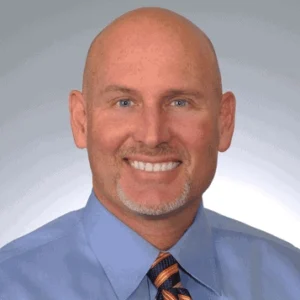Anchorage D.C. Discusses a Chiropractor’s Education, License, and Certification Requirements

Chiropractic is a healthcare profession that is mainly associated with musculoskeletal and nervous system disorders. It also involves the effects of such disorders. Your Anchorage chiropractor is trained to deal with all of these.
The related problems include but are not limited to the following: pain in the lumbar spine (low back), pain in the cervical spine (neck region), congenital bone disorders, degenerative bone disorder, bone and joint injury, bony encroachment, lumbar radiculopathy, and nerve irritation.
Therefore, a chiropractic professional (doctor of chiropractic or chiropractor) practices a conservative and manipulative approach to treating the aforementioned conditions, including patient evaluation, diagnosis followed by treatment. Chiropractors work to prepare themselves to provide the highest form of care possible.
These doctors have extensive diagnostic skills. They are also trained in other issues that may affect a patient’s health, including dietary counseling, nutritional, and lifestyle. They are definitely a solution for most of your problems without the use of medication or surgery.
Anchorage DC On Chiropractor Education and Training Requirements
Chiropractic education trains practitioners in a holistic approach to treating disorders of the nervous and musculoskeletal systems. Training to become a doctor of chiropractic (DC) usually takes approximately 6 to 8 years, 4 undergraduate and about 3 to 5 at a chiropractic institution.
The undergraduate chiropractic education is followed by a clinical internship. Chiropractic institutions and programs are accredited by the Council of Chiropractic Education (CCE) in the United States of America.
Chiropractic colleges earn as well as maintain their accreditation by meeting a number of strict requirements. The curriculum that you are most likely to follow once you are acknowledged by an accredited program may include the following courses:
First Year of Training
- General Anatomy
This is an introductory course that deals with the structure as well as parts of an organism (human). Human anatomy is a rudimentary essential science of medicine.
- Histology
This is the study of tissues and their appearance. It is used routinely in research laboratories to study the organization of tissues and the cells within them.
- Chiropractic principles
There are thirty-three chiropractic principles, including major premise, chiropractic meaning of life, union of intelligence and matter to mention a few.
- Palpation
This is the method of examining the body by using the hands, which is a popular procedure during a physical body exam.
- Human Physiology
This is a foundation of contemporary medicine, which is a science of biochemical, physical, and mechanical function.
- Chiropractic Procedures
These are chiropractic techniques used to effect healing, such as Logan basic, Gonstead, diversified technique, applied kinesiology, and flexion distraction to mention a few.
- Embryology
This is the division of natural science that deals with the creation along with early growth of an individual organism from fertilization to birth.
- Introduction to Physical Examination
This is the process of investigating the human body for signs of abnormalities, such as disease or spinal subluxations.
- Human Biochemistry
This is a field of study that comprises of clinical case studies as well as applications. The two components are resourceful to chiropractic students. This field allows students to practice their intended careers and be researchers at the same time.
- Clinical Chiropractic
This is a field that is aimed at improving the quality and standards of chiropractic by providing students with authoritative info.
- Normal Radiographic Anatomy
This is a science that involves the study of tooth anatomy, supporting structures, and anatomical landmarks.
- Fundamentals of Nutrition
Includes the study of the nourishment of an organism, in order to, enable the organism to support its individual functions.
- Functional Anatomy / Biomechanics
This is the learning of anatomy in its association to function.
- Spinal Anatomy
Involves the study of highly sensitive nerves, large muscles, tendons, flexible ligaments, and strong bones
Second Year of Training
- Pharma Toxicology
It involves the study of two broad categories: pharmacodynamics and pharmacokinetics.
- Pathology
This field relates to the research of disease or disease action during life. The field is divided into special pathology and general pathology.
- Chiropractic Procedures
These are chiropractic techniques used to effect healing, such as Logan Basic, Gonstead, diversified technique, applied kinesiology, and flexion-distraction to mention a few.
- Clinical Orthopedics and Neurology
This course involves the evaluation of neuro-musculoskeletal disorders of the spine and extra-spine.
- Community and Public Health
Has everything to do with the study of the community and public health and its relationship with chiropractic care
- Clinical Nutrition
Involves the study of nutrition of patients in a specific healthcare setting
- Practice Management
This is a class of healthcare that is involved with the daily operations of a given medical practice.
- Differential Diagnosis
This is the study of distinguishing 2 or more conditions that share comparable symptoms or signs.
- Emergency Care
This involves emergency service delivered to evaluate and treat a given medical condition.
Third Year of Training
- Integrated Chiropractic Clinical Application
This involves an inter-professional association between doctors of chiropractic and other healthcare professionals.
- Chiropractic Principles
There are thirty-three chiropractic principles, including major premise, chiropractic meaning of life, union of intelligence and matter to mention a few.
- Radiologic Positioning and Technique
This involves the study of radiologic positioning and technique.
- Clinical Application of Manual Procedures
This mainly involves the use of manual procedures in a clinical setting.
The aforementioned are among the courses you may undertake when training as a chiropractor. See the detailed list of courses here.
The fourth year of training mainly involves clinical internships in the office of a doctor of chiropractic. Students may also do a comprehensive clinical rotation at a veteran chiropractor’s clinic or facility.
Chiropractor Credentials
- Chiropractic offers a great deal of enjoyment for physicians looking to work in a healthcare field that works directly with individual patients. To enjoy such privileges, a chiropractor is required to meet the appropriate chiropractor education requirements.The major requirements are:
- A Doctorate of Chiropractic is needed to work as a chiropractor.
- Attend a chiropractic college
- Obtain a license to practice in Alaska (by state)
- Choose a chiropractic specialty
- Complete ongoing education in order to maintain licensure by state law in Alaska
A Doctor of Chiropractic Degree
To obtain a doctorate of chiropractic, you need a minimum of 6 years of college, 2 in undergraduate and 4 in chiropractic. Many of the chiropractic institutions in the United States require you to have a bachelor’s degree prior to enrollment. You should check with your state to confirm whether or not a bachelor’s degree is a must if you are looking to study chiropractic. You have to select a major that provides coursework in physics, chemistry, and biology so as to meet the prerequisites of a chiropractic college.
You are also advised to undertake other courses, such as interpersonal relations, sociology, and communication. This is necessary due to the personal contact needed by this profession.
Attend a Chiropractic College
To qualify for the profession, you are required to get a doctorate of chiropractic from an accredited chiropractic college. Currently, there are a few accredited institutions that provide a four-year degree program. Students take courses as well as labs in different fields.
All chiropractic schools include clinical internship and most offer postgraduate externship programs. Students have to take specific courses that are tailored to chiropractic techniques, including extremity adjustment techniques; spinal biomechanics; chiropractic biophysics; and instrument-assisted systems.
Certification and Licensure
The educational requirements for a chiropractic license vary significantly from one state to another. However, state licensing boards need effective completion of the four-year chiropractic college following undergraduate education.
A great number of states are known to acknowledge only chiropractic education from chiropractic institutions that are endorsed by the Council of Chiropractic Education. Some states require chiropractors to pass a basic science exam.
All states would need you to pass a licensure exam. The National Board of Chiropractic Examiners (NBCE) administer the exams in each state. Each state may supplement NBCE tests with respect to separate state requirements.
Forty-four states would require you to complete a given number of hours of ongoing education every year in order to maintain licensure, and stay current in the field. Normally, ongoing education is provided by the American Chiropractic Association among other bodies.
Choose a Chiropractic Specialty
Once you have met all the above chiropractor education requirements, you would be required to choose a specific chiropractic specialty. The most popular chiropractic specialties include pediatrics, geriatrics, and sports injuries.
A given number of chiropractors in Anchorage choose neuropathy along with chiropractic procedures so as to be able to treat back pain problems and the nervous system without the use of medication or invasive surgery. Professionals may also specialize in community outreach programs to spread knowledge of manipulative therapy.
Complete Ongoing Education in order to Maintain Licensure
Holding a chiropractor license is not enough, you need to complete continuing education in order to maintain licensure in Alaska and other states. As required by the Federation of Chiropractic Licensing Boards, this usually happens in every one to three years.
You should expect the restrictions to vary from one state to another. Some states may completely reject hours completed via long-distance learning. Other states may need you to cover specific content through continuing education programs.
DC Medical License Verification
You can look up a license to check up its verification status. To look up a license, most states would require you to provide the following information: country or city, license number, business or facility name, license type, and profession. You should feel comfortable asking to review the license of a person, business, establishment, or facility. Trusting your chiropractic physician is your right.
Anchorage DC Explains What Are Chiropractors Licensed to Do?
A licensed chiropractor cares for people with neuro-musculoskeletal health problems. These may include problems with the joints, tendons, ligaments, muscles, bones, and nerves. Doctors of chiropractic based in Anchorage use spinal manipulation among other manipulative procedures to bring effective healing.
The following are the major things that a licensed chiropractor would do:
- Evaluate a medical condition (mainly related to the spine) by reviewing a patient’s medical history, conduct a physical exam, listen to a patient’s complaints
- Evaluation of the patient’s spine to uncover any subluxations, including X-rays
- Identify health problems that are directly or indirectly linked to the nervous and musculoskeletal systems
- Deliver neuro-musculoskeletal treatment, including the use of spinal adjustments and other therapies
- Offer patients advice on lifestyle and health issues, including sleeping habits, nutrition, and exercise
- Refer specific patients to other healthcare physicians, if needed
Certified Chiropractic Physician
Chiropractors are mainly specialized in neuro-musculoskeletal problems. However, many chiropractic physicians will also be trained and well-equipped to work with a variety of conditions. Chiropractors may choose additional certifications based on their own interests. Specific certifications will vary by facility. Consider a facility that offers multiple types of treatment. Better Health Chiropractic & Physical Rehab in Alaska offers a multi-disciplinary approach, allowing patients to better navigate their care and speed recovery.
Chiropractic physicians are trained to provide conservative treatments according to the needs of each patient. He or she is capable of devising an effective rehabilitation program for the involved patient. The skills of this doctor include performance optimization of a patient’s nervous and musculoskeletal systems.
Conclusion
We created this article to help you understand what education, certifications, and licensing a chiropractor needs to retain. You can use this information to learn the basics of chiropractic education and more. At Better Health Chiropractic & Physical Rehab we enjoy the process of chiropractic care and look forward to helping you find what treatments may best fit your health needs and lifestyle goals. Contact our chiropractic clinic in Anchorage today!
Schedule an Appointment and Receive
FREE One-Hour Massage Certificate
That’s right! Receive a certificate for a free one-hour massage with our highly-trained and licensed massage therapists for use after your first appointment. Use it yourself, or give it to a friend.

About the Author
Dr. Brent Wells has been a trusted chiropractor since moving his family from Oregon to Alaska back in 1998 and founded Better Health Alaska – B.S. from Univ. of Nevada, Doctorate from Western States Chiropractic College, volunteer for Reflex Sympathetic Dystrophy Foundation, and member of the American Chiropractic Association. As a chiropractor his focus is on family, including his 3 children and wife of 20+ years, his clinics, and ongoing education.
Related Posts
NEWSLETTER SIGN-UP
Sign up now!
South Anchorage
- 8840 Old Seward Hwy E, Anchorage, Alaska 99515
- Phone: 907-743-0110
- Open Hours: 9AM to 7PM













